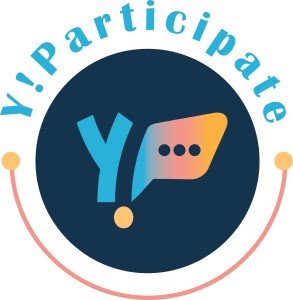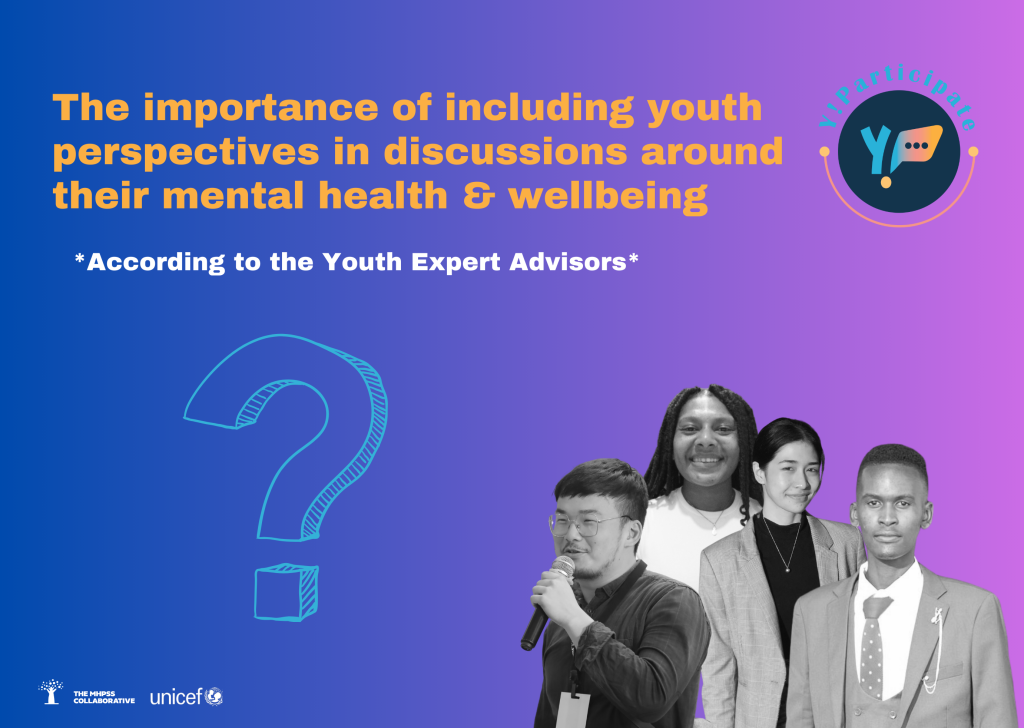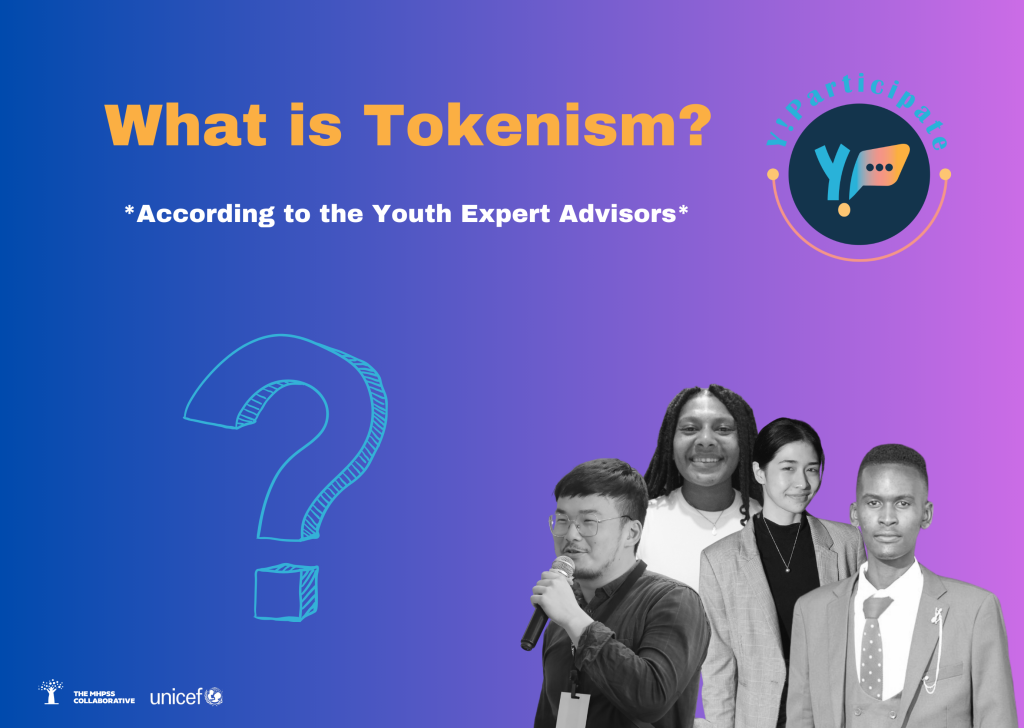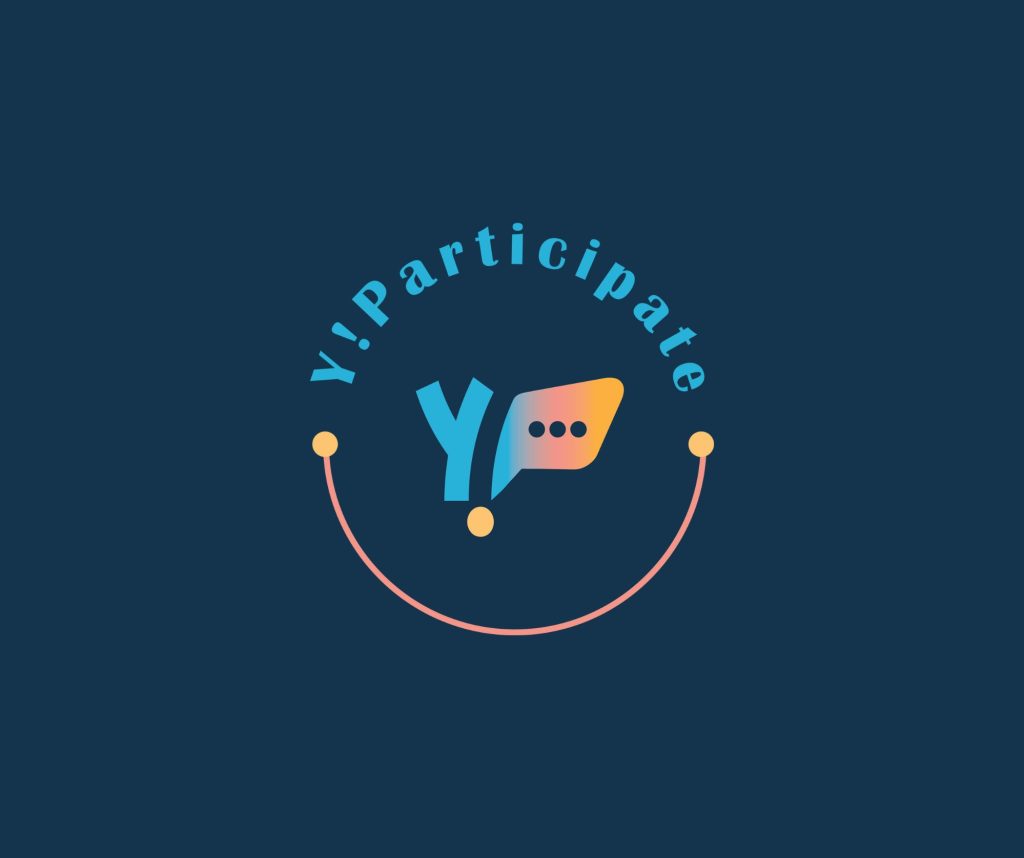Amplifying young voices: The importance of including youth perspectives in discussions around their mental health & wellbeing
Y!Participate Youth Expert Advisors Nadia, Sharon and Seluleko explore the challenges and stressors currently impacting youth mental health, and strategies for creating open dialogues that amplify young voices. As we navigate an increasingly complex world, the mental health and wellbeing of children and young people has become an urgent issue. Current statistics show that about one in seven (14%) of adolescents aged 10-19 globally experience a mental disorder. Among adolescents, depression and anxiety rank as leading causes of illness and disability, with suicidecurrently the third leading cause of death for those aged 15 to 29. According to WHO, “The consequences of failing to address adolescent mental health conditions extend to adulthood, impairing both physical and mental health and limiting opportunities to lead fulfilling lives as adults.” But these statistics only tell part of the story. Though young people possess valuable insights that can inform more effective mental health support systems and interventions tailored to their needs and unique experiences, their perspectives are often overlooked in conversations led predominantly by older generations. With the help of Y!Participate Youth Expert Advisors Nadia, Sharon and Seluleko, this blog explores the various challenges currently impacting youth mental health, the stressors that contribute to these issues, and strategies for creating open dialogues that amplify young voices. What are some of the challenges young people currently face in relation to their mental health and wellbeing? Sharon Young people today face a multitude of challenges that significantly impact their mental health and overall well-being. These challenges can be categorised into external and internal factors. External issues often stem from societal pressures, including peer influence and family dynamics, which can create an environment of stress and anxiety. Simultaneously, many young individuals grapple with internal struggles, such as the relentless pursuit of perfection and self-expectation. This complex interplay between external and internal pressures highlights the need for increased awareness and support for mental health among youth, emphasizing the importance of fostering resilience and open dialogue about these issues. Moreover, with the presence of social media, the world feels like it exists without borders. For example, we often find ourselves comparing our achievements to those of others who have posted on their social media accounts. We don’t realise that social media is curated to showcase only what users wish to present—their successes and happiness. What about the processes and failures behind those highlights? Everyone has their own starting points and experiences low phases in their lives, so it is better for us not to compare ourselves with what is displayed on social media. What are some of the stressors youth are dealing with? Seluleko According to the youth, especially in Sub-Saharan Africa, poverty is the chief stressor that ultimately births all the other stressors. Youth unemployment, poor access to quality and comprehensive education, and shortage of comprehensive healthcare are further cited in this regard. Ultimately, other encounters that we have with stressful situations such bereavement, finding a job after graduation, academic pressure, bullying, body image with the advent of social media, family dynamics and violence among others, eventually lead to poor mental health. These are the situational stressors that often impede our ability to navigate through life (and even its very smallest challenges) as a result of a lack of resilience. Nadia Young people deal with a multitude of stressors. These stressors are both internal and external. Externally, they deal with stressors from all things around them – mostly the environment and the people. Internally, these stressors stem from their individual navigations through life as young people – mostly from the challenges they face and the choices they have made, are making, and need to make. The stressors that come externally from the environment and people mostly stem from societal expectations. These expectations vary from one society to another depending on so many factors – mostly cultural, economical, and social. Internally, these stressors are underlyingly influenced by the external stressors. All in all, most of these stressors, both internal and external, are cross-cutting and are a result of a variety of factors. How can some of these challenges be addressed? Nadia There are various approaches that can be implemented to address the challenges that young people face as stressors. These approaches include open dialogues, creation of safe spaces, more awareness on the importance of mental health and how young people can take care of their mental health and on a higher level, Institutionalizing counseling services for young people. These approaches must all be created and established with all factors considered, more importantly – they must be contextualized depending on the context in which they are to come into existence in. It is essential to involve young people in the process to better establish approaches that will serve the interests of young people and address their challenges. How do you perceive the situation regarding youth mental health in your country? Seluleko In Eswatini, strides – though minimal – have been made to support youth mental health initiatives for improved well-being. However, all efforts by the government and development partners in civil society have so far been rendered fruitless. The rippling impact of poor mental health among young people is evident in the ever-growing suicide rates, unintended pregnancy and non-clinical abortion rates and continued imprisonment of young men and boys for perpetuating gender violence, among other factors. With the tremendous lack of economic, social and mental health empowerment strategies that are tailored by youth for youth, with guidance from field experts, it can be deduced that Eswatini is still a long way from attaining an ‘adequate support’ status towards youth mental health. Are young voices being heard in the discussion around mental health? Sharon As youth, our voices are increasingly recognized in discussions around mental health, reflecting a growing awareness of the unique challenges we face. However, it often feels like our participation can be superficial, especially in settings dominated by older stakeholders. In these instances, we may be invited to share our perspectives, but the outcomes often prioritize the established viewpoints



